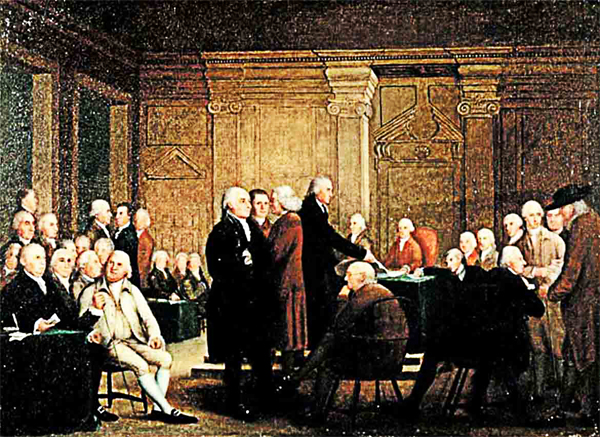
American Revolutionary War: Continental Army is established by the Continental Congress on June 14, 1775
Continental Army is established by the Continental Congress: On 14 June 1775, Congress “Resolved, That six companies of expert riflemen, be immediately raised in Pennsylvania, two in Maryland, and two in Virginia… [and] as soon as completed, shall march and join the army near Boston, to be there employed as light infantry, under the command of the chief Officer in that army.”
The delegates then prescribed an oath of enlistment that required the soldiers to swear:
“I have, this day, voluntarily enlisted myself, as a soldier, in the American continental army, for one year, unless sooner discharged: And I do bind myself to conform, in all instances, to such rules and regulations, as are, or shall be, established for the government of the said. Army.”
The next day, June 15, 1775, Congress voted to appoint George Washington “to command all the Continental forces” and began laying the foundation for “the American army”.
With words that sound hauntingly familiar two hundred forty-five years later,
“The delegates of the United Colonies … reposing special trust and confidence in the patriotism, valor, conduct, and fidelity” of George Washington, issued its first commission by appointing him “General and Commander in chief of the Army of the United Colonies, and of all the forces now raised, or to be raised by them, and of all others who shall voluntarily offer their services, and join the Defense of American liberty, and for repelling every hostile invasion…”
Washington had been managing his family’s plantation and serving in the Virginia House of Burgesses when the second Continental Congress unanimously voted to have him lead the revolutionary army. He had earlier distinguished himself, in the eyes of his contemporaries, as a commander for the British army in the French and Indian War of 1754.
Born a British citizen and a former Redcoat, Washington had, by the 1770s, joined the growing ranks of colonists who were dismayed by what they considered to be Britain’s exploitative policies in North America. In 1774, Washington joined the Continental Congress as a delegate from Virginia. The next year, the Congress offered Washington the role of commander in chief of the Continental Army.
After accepting the position, Washington sat down and wrote a letter to his wife, Martha, in which he revealed his concerns about his new role. He expressed uneasiness at leaving her alone, told her he had updated his will and hoped that he would be home by the fall. He closed the letter with a postscript, saying he had found some of “the prettiest muslin” but did not indicate whether it was intended for her or for himself.
On July 3, 1775, Washington officially took command of the poorly trained and under-supplied Continental Army. After six years of struggle and despite frequent setbacks, Washington managed to lead the army to key victories and Great Britain eventually surrendered in 1781. Due largely to his military fame and humble personality, Americans overwhelmingly elected Washington their first president in 1789.
ARMY.mil / History Channel / Wikipedia / Encyclopedia Britannica /
Library Of Congress.gov
American Revolutionary War: Continental Army is established by the Continental Congress on June 14, 1777 (YouTube) 
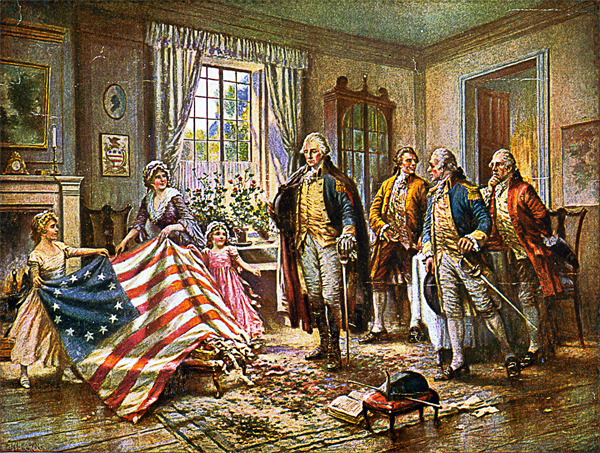
Congress adopts the Stars and Stripes on June 14, 1777
Congress adopts the Stars and Stripes: During the American Revolution, the Continental Congress adopts a resolution stating that “the flag of the United States be thirteen alternate stripes red and white” and that “the Union be thirteen stars, white in a blue field, representing a new Constellation”.
The national flag, which became known as the “Stars and Stripes”, was based on the “Grand Union” flag, a banner carried by the Continental Army in 1776 that also consisted of 13 red and white stripes. According to legend, Philadelphia seamstress Betsy Ross designed the new canton for the Stars and Stripes, which consisted of a circle of 13 stars and a blue background, at the request of General George Washington.
Historians have been unable to conclusively prove or disprove this legend.
With the entrance of new states into the United States after independence, new stripes and stars were added to represent new additions to the Union. In 1818, however, Congress enacted a law stipulating that the 13 original stripes be restored and that only stars be added to represent new states.
On June 14, 1877, the first Flag Day observance was held on the 100th anniversary of the adoption of the Stars and Stripes. As instructed by Congress, the U.S. flag was flown from all public buildings across the country. In the years after the first Flag Day, several states continued to observe the anniversary, and in 1949 Congress officially designated June 14 as Flag Day, a national day of observance.
History Channel / Wikipedia / Encyclopedia Britannica /
Library Of Congress.gov / National Archives.gov / Smithsonian /
U.S. History.org /
Congress adopts the Stars and Stripes on June 14, 1777 (YouTube) 
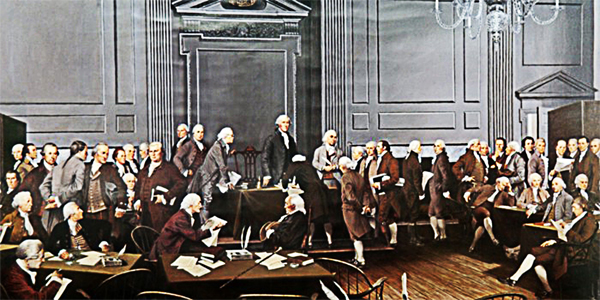
James Madison introduces 12 amendments, the Bill of Rights to the United States Constitution in Congress on June 08, 1789
James Madison introduces 12 amendments, the Bill of Rights to the United States Constitution in Congress: On June 8, 1789, James Madison addressed the House of Representatives and introduced a proposed Bill of Rights to the Constitution. More than three months later, Congress would finally agree on a final list of Rights to present to the states.
Some of Madison’s opening list of amendments didn’t make the final cut in September. The House agreed on a version of the Bill of Rights that had 17 amendments, and later, the Senate consolidated the list to 12 amendments. In the end, the states approved 10 of the 12 amendments in December 1791. One of two amendments rejected by the states was eventually ratified in 1992 as the 27th Amendment; it restricted the ability of Congress to change the pay of a sitting Congress while in session.
(The other proposed amendment not ratified dealt with the number of representatives in Congress, based on the 1789 population.)
But if Madison had his original way, our Constitution would have a two-part Preamble that includes part of Thomas Jefferson’s Declaration of Independence before the current preamble.
On June 8, 1789, Madison told Congress the Preamble needed a “pre-Preamble”.
“First. That there be prefixed to the Constitution a declaration, that all power is originally vested in, and consequently derived from, the people. That Government is instituted and ought to be exercised for the benefit of the people; which consists in the enjoyment of life and liberty, with the right of acquiring and using property, and generally of pursuing and obtaining happiness and safety. That the people have an indubitable, unalienable, and indefeasible right to reform or change their Government, whenever it be found adverse or inadequate to the purposes of its institution.”
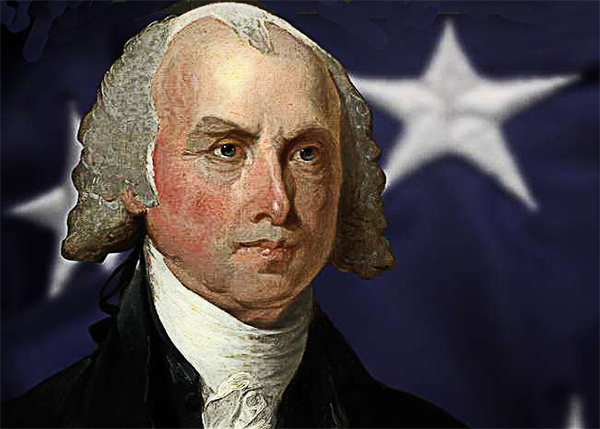
In essence, Madison wanted to bury arguably the most famous sentence in American history, “We the People”, in the middle of a combined Preamble.
Roger Sherman of Connecticut was among the first to question the move to downplay “We the People”.
“The truth is better asserted than it can be by any words what so ever. The words ‘We the People’ in the original Constitution are as copious and expressive as possible”, he said. And in time, Congress deleted the entire “pre-Preamble” as the Bill of Rights went through committees.
Another item that Madison proposed was making sure at least three of the liberties guaranteed in the Bill of Rights applied to all states. “No State shall violate the equal rights of conscience, or the freedom of the press, or the trial by jury in criminal cases”, Madison said in the fifth part of his original Bill of Rights proposal. The selective incorporation of parts of the Bill of Rights to the states didn’t happen until the early part of the 20th century as the Supreme Court interpreted the 14th Amendment in a series of cases.
Madison also wanted to clearly spell out that each branch of government had clear, distinct roles.
“The powers delegated by this Constitution are appropriated to the departments to which they are respectively distributed: so that the Legislative Department shall never exercise the powers vested in the Executive or Judicial, nor the Executive exercise the powers vested in the Legislative or Judicial, nor the Judicial exercise the powers vested in the Legislative or Executive Departments”, he said in the last part of his proposed Bill of Rights.
Neither of these items made it through the congressional review process. But Madison felt strongly enough about the separation of powers clause that he wanted it as the new Article VII in the Constitution.
And the second part of the new “Article VII” did survive in the Bill of Rights. It became the Tenth Amendment: “The powers not delegated by this Constitution, nor prohibited by it to the States, are reserved to the States respectively.”
Another interesting twist in Madison’s proposed Bill of Rights was a different version of what became the Second Amendment.
“The right of the people to keep and bear arms shall not be infringed; a well armed and well regulated militia being the best security of a free country: but no person religiously scrupulous of bearing arms shall be compelled to render military service in person”, said Madison.
And the final, big difference that Madison wanted was the entire Bill of Rights interwoven within the Constitution, and not appended at the document’s end.
That idea didn’t pass muster with Congress because there were concerns of an appearance that the Constitution was being rewritten. Madison dropped his support of “interweaving” the amendments during the House debate about moving his already amended Bill of Rights to the Senate. In the end, many core ideas introduced by Madison in June 1789 made it into the ratified version of the Bill of Rights.
“I think we should obtain the confidence of our fellow citizens, in proportion as we fortify the rights of the people against the encroachments of the government”, Madison said in his address to Congress in June 1789.
Constitution Center.org / Wikipedia / Encyclopedia Britannica /
National Archives.gov / Library Of Congress.gov / Visit The Capitol.gov /
Architect of the Capitol.gov / U.S. Citizenship Immigration Services.gov / History Channel /
James Madison introduces 12 amendments, the Bill of Rights to the United States Constitution in Congress on June 08, 1789 (YouTube) 
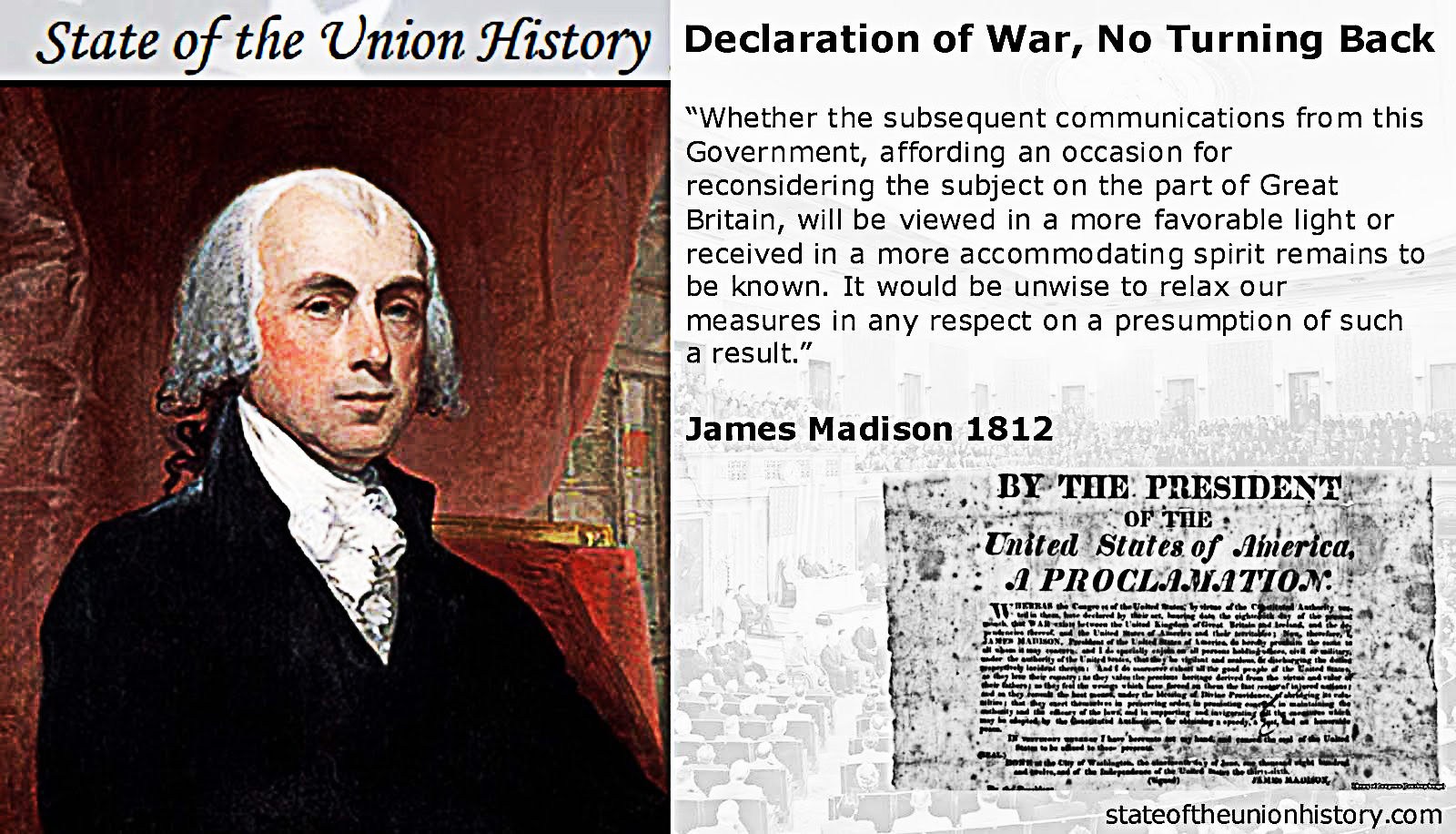
War of 1812: U.S. President James Madison asks the Congress to declare war on Great Britain on June 08, 1812
U.S. President James Madison asks the Congress to declare war on Great Britain: As Congress debated whether to declare war against Great Britain, President James Madison addressed a message to the Senate and House of Representatives detailing British offenses against the United States.
Madison concluded that Great Britain was already in a state of war against the United States, but left Congress to determine the nation’s response.
On June 19, 1812, the Senate followed the House of Representatives in voting to declare war against Great Britain, the day after President James Madison signs the declaration into law - and the War of 1812 begins. The American war declaration, opposed by a sizable minority in Congress, had been called in response to the British economic blockade of France, the induction of American seaman into the British Royal Navy against their will, and the British support of Indian tribes along the Great Lakes frontier. A faction of Congress known as the “War Hawks” had been advocating war with Britain for several years and had not hidden their hopes that a U.S. invasion of Canada might result in significant territorial land gains for the United States.
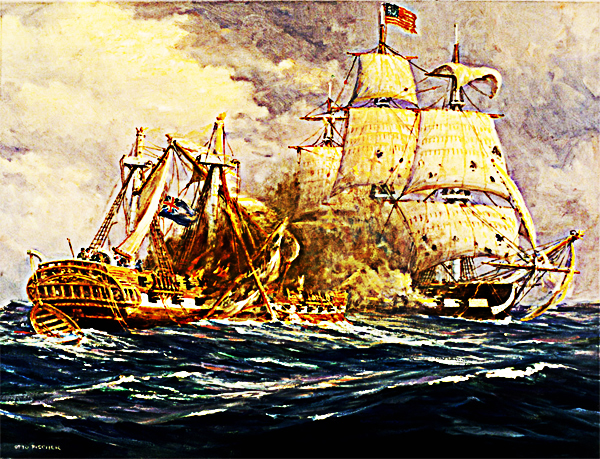
In the months after President Madison proclaimed the state of war to be in effect, American forces launched a three-point invasion of Canada, all of which were decisively unsuccessful. In 1814, with Napoleon Bonaparte’s French Empire collapsing, the British were able to allocate more military resources to the American war, and Washington, D.C., fell to the British in August. In Washington, British troops burned the White House, the Capitol, and other buildings in retaliation for the earlier burning of government buildings in Canada by U.S. soldiers.
In September, the tide of the war turned when Thomas Macdonough’s American naval force won a decisive victory at the Battle of Plattsburg Bay on Lake Champlain. The invading British army was forced to retreat back into Canada. The American victory on Lake Champlain led to the conclusion of U.S.-British peace negotiations in Belgium, and on December 24, 1814, the Treaty of Ghent was signed, formally ending the War of 1812. By the terms of the agreement, all conquered territory was to be returned, and a commission would be established to settle the boundary of the United States and Canada.
British forces assailing the Gulf Coast were not informed of the treaty in time, and on January 8, 1815, the U.S. forces under Andrew Jackson achieved the greatest American victory of the war at the Battle of New Orleans. The American public heard of Jackson’s victory and the Treaty of Ghent at approximately the same time, fostering a greater sentiment of self-confidence and shared identity throughout the young republic.
HISTORY STORIES: Things You May Not Know About the War of 1812
History Channel / Wikipedia / Encyclopedia Britannica /
Battle Fields.org / Smithsonian Institute.org / Office of The Historian.gov /
Library Of Congress.gov / War Museum Canada / USS Constitution Museum.org /
Constitution Center.org / Famous Trials / Live Science /
War of 1812: U.S. President James Madison asks the Congress to declare war on Great Britain on June 01, 1812 (YouTube) 
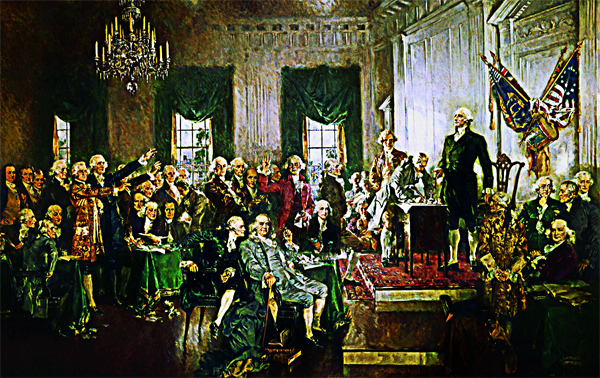
U.S. Constitution ratified on June 21, 1788
U.S. Constitution ratified: New Hampshire becomes the ninth and last necessary state to ratify the Constitution of the United States, thereby making the document the law of the land.
By 1786, defects in the post-Revolutionary War Articles of Confederation were apparent, such as the lack of central authority over foreign and domestic commerce. Congress endorsed a plan to draft a new constitution, and on May 25, 1787, the Constitutional Convention convened at Independence Hall in Philadelphia.
On September 17, 1787, after three months of debate moderated by convention president George Washington, the new U.S. constitution, which created a strong federal government with an intricate system of checks and balances, was signed by 38 of the 41 delegates present at the conclusion of the convention. As dictated by Article VII, the document would not become binding until it was ratified by nine of the 13 states.
Beginning on December 7, five states - Delaware, Pennsylvania, New Jersey, Georgia, and Connecticut - ratified it in quick succession. However, other states, especially Massachusetts, opposed the document, as it failed to reserve undelegated powers to the states and lacked constitutional protection of basic political rights, such as freedom of speech, religion, and the press.
In February 1788, a compromise was reached under which Massachusetts and other states would agree to ratify the document with the assurance that amendments would be immediately proposed. The Constitution was thus narrowly ratified in Massachusetts, followed by Maryland and South Carolina.
On June 21, 1788, New Hampshire became the ninth state to ratify the document, and it was subsequently agreed that government under the U.S. Constitution would begin on March 4, 1789. In June, Virginia ratified the Constitution, followed by New York in July.
On September 25, 1789, the first Congress of the United States adopted 12 amendments to the U.S. Constitution - the Bill of Rights - and sent them to the states for ratification.
Ten of these amendments were ratified in 1791. In November 1789, North Carolina became the 12th state to ratify the U.S. Constitution. Rhode Island, which opposed federal control of currency and was critical of compromise on the issue of slavery, resisted ratifying the Constitution until the U.S. government threatened to sever commercial relations with the state.
On May 29, 1790, Rhode Island voted by two votes to ratify the document, and the last of the original 13 colonies joined the United States. Today the U.S. Constitution is the oldest written constitution in operation in the world.
History Channel / Wikipedia / Encyclopedia Britannica /
Constitution Center.org / National Archives.gov / Library Of Congress.gov / Gilder Lehrman.org /
U.S. Constitution ratified on June 21, 1788 (YouTube) 
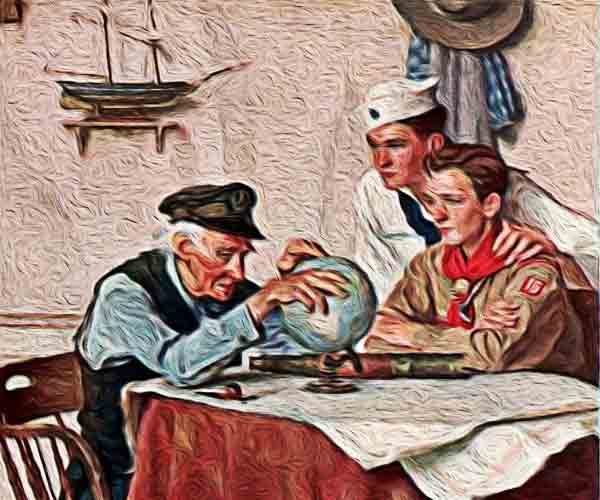
Understanding Military Terminology
Refraction
(DOD) The creation of lanes through a minefield or obstacle to allow passage of the attacking ground force.
Joint Publications (JP 3-15) Barriers, Obstacles, and Mine Warfare for Joint Operations
Refugee
(DOD) A person who, owing to a well-founded fear of being persecuted for reasons of race, religion, nationality, membership of a particular social group, or political opinion, is outside the country of his or her nationality and is unable or, owing to such fear, is unwilling to avail himself or herself ofthe protection of that country.
See also Dislocated Civilian; Displaced person; Evacuee; Stateless Person.
Joint Publications (JP 3-29) Foreign Humanitarian Assistance
Regimental Landing Team
(DOD) A task organization for landing composed of an infantry regiment reinforced by those elements that are required for initia tion of its combat function ashore.
Joint Publications (JP 3-02) Amphibious Operations
Regional Air Defense Commander
(DOD) Commander, subordinate to the area air defense commander, who is responsible for air and missile defenses in the assigned region and exercises authorities as dele gated by the area air defens e commander..
Also called RADC.
Joint Publications (JP 3-01) Countering Air and Missile Threats
Joint Publication - Department of Defense Dictionary of Military and Associated Terms
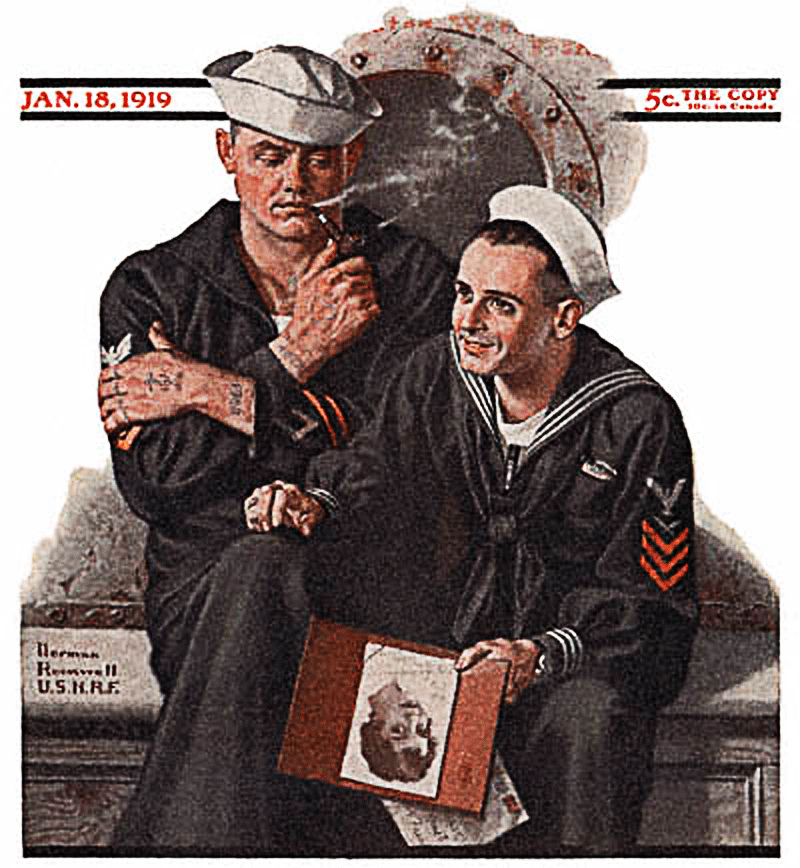
The Old Salt’s Corner
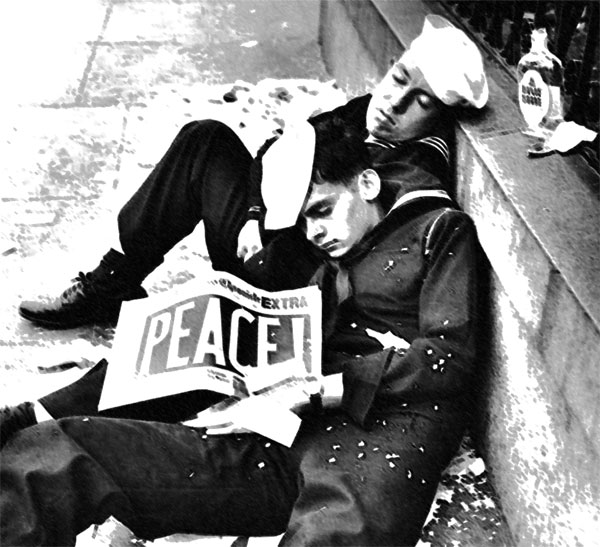
“THE OLD OUTFIT”
“Written By a World War Two Sailor”
Come gather round me lads and I'll tell you a thing or two,
about the way we ran the Navy in nineteen forty two.
When wooden ships and iron men were barely out of sight,
I am going to give you some facts just to set the record right.
We wore the ole bell bottoms, with a flat hat on our head,
and we always hit the sack at night. We never “went to bed”.
Our uniforms were worn ashore, and we were mighty proud.
Never thought of wearing civvies, in fact they were not allowed.
Now when a ship puts out to sea. I'll tell you son - it hurts!
When suddenly you notice that half the crews wearing skirts.
And it's hard for me to imagine, a female boatswains mate,
stopping on the Quarter deck to make sure her stockings are straight.
What happened to the KiYi brush, and the old sa lt-water bath?
Holy stoning decks at night- cause you stirred old Bosn's wrath!
We always had our gedunk stand and lots of pogey bait.
And it always took a hitch or two, just to make a rate.
In your seabag all your skivvies, were neatly stopped and rolled.
And the blankets on your sack had better have a three-inch fold.
Your little ditty bag . . it is hard to believe just how much it held,
and you wouldn't go ashore with pants that hadn't been spiked and belled.
Oh we had our belly robbers - but there weren't too many gripes.
For the deck apes were never hungry and there were no starving snipes.
Now you never hear of Davey Jones, Shellbacks Or Polliwogs,
and you never splice the mainbrace to receive your da ily grog.
Now you never have to dog a watch or stand the main event.
You even tie your lines today - back in my time they were bent.
We were all two-fisted drinkers and no one thought you sinned,
if you staggered back aboard your ship, three sheets to the wind.
And with just a couple hours of sleep you regained your usual luster.
Bright eyed and bushy tailed- you still made morning muster.
Rocks and shoals have long since gone, and now it's U.C.M.J.
THEN the old man handled everything if you should go astray.
Now they steer the ships with dials, and I wouldn't be surprised,
if some day they sailed the damned things- from the beach computerized.
So when my earthly hitch is over, and the good Lord picks the best,
I'll walk right up to HIM and say, “Sir, I have but one request -
Let me sail the seas of Heaven in a coat of Navy blue.
And unfilled shadows heaven casts.
Like I did so long ago on earth - way back in nineteen-forty two.”
~ Lt. J.G Don Ballard joined the U.S. Navy in 1935 when he received $21.00 per Month. What the author says in his words is true. In 1935 only 13 men joined the Navy (from Tennessee) and Don was one of them.
Proudly copied from Lt .Ballard USN Retired, April 13, 2002 , who loved the Navy and all the men he served with in all of World War Two.
~ Photo: The deaths of these 5 sailors changed how U.S. manned military units, Navy Times

“I’m Just Sayin”
“To begin, begin.”
“Nature never did betray the heart that loved her.”
“The ocean is a mighty harmonist.”
“The child is father of the man.”
“The best preparation for tomorrow is doing your best today.”
“One of the most beautiful qualities of true friendship is to understand and to be understood.”
“A simple child that lightly draws it's breath and feels its life in every limb.
What should it know of death?”
“What we need is not the will to believe,
but the wish to find out.”
“When I stand before God at the end of my life,
I would hope that I would not have a single bit of talent left,
and could say,
What you see is what you reflect.
\ ‘I used everything you gave me’.”
~ William Wordsworth

“Thought for the Day”
“Science never solves a problem without creating ten more.”
“Alcohol is the anesthesia by which we endure the operation of life.”
“All great truths begin as blasphemies.”
“The only secrets are the secrets that keep themselves.”
“Life isn't about finding yourself.
Life is about creating yourself.”
“We don't stop playing because we grow old;
we grow old because we stop playing.”
“A life spent making mistakes is not only more honorable,
but more useful than a life spent doing nothing.”
“Beware of false knowledge;
it is more dangerous than ignorance.”
“Beware of the man who does not return your blow:
he neither forgives you nor allows you to forgive yourselfe.”
~ George Bernard Shaw

“What I Learned”
“Experience is simply the name we give our mistakes.”
“When the gods wish to punish us they answer our prayers.”
“True friends stab you in the front.”
“Consistency is the last refuge of the unimaginative.”
“The truth is rarely pure and never simple.”
“Some cause happiness wherever they go;
others whenever they go.”
“Man is least himself when he talks in his own person.
Give him a mask, and he will tell you the truth.”
“A man's face is his autobiography.
A woman's face is her work of fiction.”
“There is only one thing in life worse than being talked about,
and that is not being talked about.”
“Education is an admirable thing,
but it is well to remember from time to time that nothing that is worth knowing can be taught.”
~ Oscar Wilde
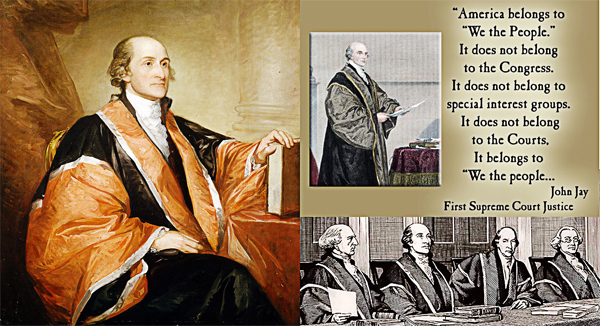 Mr. Answer Man Please Tell Us: Why Do Supreme Court Justices Serve for Life?
Mr. Answer Man Please Tell Us: Why Do Supreme Court Justices Serve for Life?
There are few political appointments quite as important as a nomination to the U.S. Supreme Court. Unlike a cabinet secretary or an ambassador, justices serve for life. In the modern era, that often means more than three decades on the court.
Thanks to increased lifespans, justices appointed in the next century are expected to sit on the Supreme Court for an average of 35 years, compared to the average of around 16 years that judges served in the past.
Because of this shift, some scholars have begun to question whether lifetime appointments are still appropriate, as the definition of “for life” has changed so much since the Constitution was written. But why do justices serve for life, anyway?
The U.S. Constitution doesn’t exactly specify that justices and the court are in a “’til death do us part” relationship. Article III says that judges (of both the Supreme Court and lower federal courts) “shall hold their offices during good behavior”.
So technically, a judge could be removed if they no longer meet the “good behavior” part of the clause, but there are otherwise no limits on their term.
In practice, this means they have their seat for life, unless they are impeached and removed by Congress. Only 15 federal judges in U.S. history have ever been impeached by Congress—all lower court judges—and only eight have been removed from office, though some have resigned before their inevitable removal.
The only Supreme Court justice Congress has tried to impeach was Samuel Chase, who was appointed by George Washington in 1796. Chase was an openly partisan Federalist vehemently opposed to Thomas Jefferson’s Democratic-Republican policies, and he wasn’t afraid to say so—either in his role as a lower court judge or once he was appointed to the Supreme Court.
In 1804, the House of Representatives, at then-president Jefferson’s urging, voted to impeach Chase, accusing him, among other things, of promoting his political views from the bench instead of ruling as a non-partisan judge. However, he was acquitted of all counts in the Senate, and went on to serve as a Supreme Court justice until his death in 1811.
The point of giving justices a seat on the bench for the rest of their lives (or, more commonly nowadays, until they decide to retire) is to shield the nation’s highest court from the kind of partisan fighting the Chase impeachment exemplified.
The Supreme Court acts as a check against the power of Congress and the president. The lifetime appointment is designed to ensure that the justices are insulated from political pressure and that the court can serve as a truly independent branch of government.
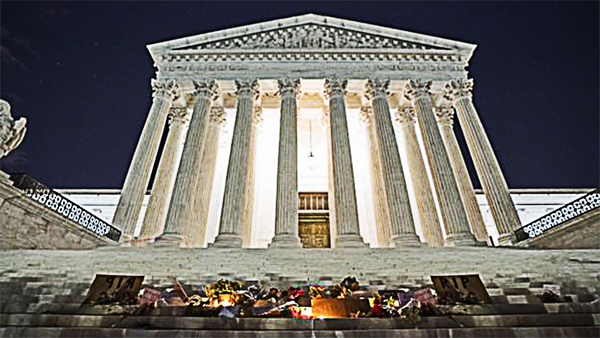
Justices can’t be fired if they make unpopular decisions, in theory allowing them to focus on the law rather than politics. Justices might be nominated because a president sees them as a political or ideological ally, but once they’re on the bench, they can’t be recalled, even if their ideology shifts. Some data, for instance, suggests that many justices actually drift leftward as they age.
Alexander Hamilton wrote in the Federalist No. 78:
The lack of term limits “is the best expedient which can be devised in any government, to secure a steady, upright, and impartial administration of the laws”.
The judiciary, he believed, “is in continual jeopardy of being overpowered, awed, or influenced by its coordinate branches”, and “nothing can contribute so much to its firmness and independence, as permanency in office.”.
Without lifetime job security, he argued, judges might feel obligated to bow to the wishes of the president, Congress, or the public, rather than confining their work strictly to questions of the Constitution.
While lifetime appointments may be a longstanding tradition in the U.S., this approach isn’t the norm in other countries. Most other democracies in the world have mandatory retirement ages if not hard-and-fast term limits for high court judges.
UK Supreme Court justices face mandatory retirement at age 70 (or 75 if they were appointed before 1995), as do judges on Australia’s High Court. Canadian Supreme Court justices have a mandatory retirement age of 75, while the 31 justices of India’s Supreme Court must retire by the age of 65.
Until her passing at the age of 87 on September 18, 2020, the oldest justice on the current U.S. Supreme Court was Ruth Bader Ginsburg. Oliver Wendell Holmes Jr., the oldest justice in U.S. history, retired in 1932 at age 90.
Though the U.S. Supreme Court has never had term limits before, there have recently been serious proposals to implement them. Term limits, advocates argue, could combat partisan imbalances on the court. Presidents wouldn’t get to appoint justices purely based on whether someone died while they were in office, and the stakes for political parties nominating a justice would be slightly lower, possibly leading presidents and Congress to compromise more on appointments.
One popular suggestion among political analysts and scholars is to impose an 18-year term limit, though critics note that that particular plan does bring up the potential that at some point, a single president could end up appointing the majority of the justices on the court.
In any case, considering such a change would likely require a constitutional amendment, which means it’s probably not going to happen anytime soon. For the foreseeable future, being on the Supreme Court will continue to be a lifetime commitment.
Mental Floss / Wikipedia / Encyclopedia Britannica /
Supreme Court of the United States.gov / Judicial Learning Center.org/ / Quora /
Why Do Supreme Court Justices Serve for Life? (YouTube) 

NAVSPEAK aka U.S. Navy Slang
Up The Hawse Hole/Pipe: An enlisted man going officer. See “Mustang”.
USS Backyard: A sailor's home of record, to which he or she happily returns upon discharge.
USS Belcrash: The United States Coast Guard. So called because it is the 5th branch of the armed forces, yet falls under the control of the Department of Homeland Security.
USS Forestfire: The USS Forrestal (CV-59). So called due to the number of fires that have broken out on board ship.
USS Immobile Bay: USS Mobile Bay (CG-53). So called due to the time spent pierside during work ups for deployment after Mobile Bay failed INSURV inspection in 2011.
USS In-Port Royal: The USS Port Royal (CG-73). So called due to time spent in port after running aground near entrance to Pearl Harbor.
USS Lastship: he ship a sailor was on previously. Used when a sailors try to tell stories about their previous ships, or how things were handled on their previous ships. Compare “USS Ustafish”.
USS Lake Cham Pain: he USS Lake Champlain.
USS Neverdock: Any ship that seems to stay out at sea for unusually long periods of time. For sailors, this is usually their own ship.
USS Neversail:
(1) Any mock-up ship found in boot camp. Also called USS Recruit.
(2) Any real ship which seldom leaves port, for example a sub tender.
USS Oriskany CVA34: Carriers today are designated as CV, During the VietNam error the A added to CV stood for attack carrier.
USS Loungechair: The fictional ship sailors serve on when they retire.
USS Notagain (DD 214): The fictional ship which sailors who are separating from the Navy specify when they are asked which command they are going to, or which former sailors specify when new personnel ask which ship they are on.
“DD 214” is the form that must be filled out before a member of the military may be discharged. “DD” was also the type designation for pre-missile destroyers.
USS Slurpeefish: The USS SAN FRANCISCO. So called because the ship's hull is number SSN 711.
USS Ustafish (Submarine Service): The boat a sailor was on previously. Pronounced "used to fish", the term is a reference to the time when attack boats were named after fish.
Compare “USS Lastship”. “We don't want to hear about your Ustafish stories.”
USS Zippo: Derogatory name for USS Forrestal (CV 59).
Wiktionary.org

Just for you MARINE
USMC: Acronym for United States Marine Corps.
Also used as a pejorative backronym: Uncle Sam's Misguided Children, U Signed the Motherfucking Contract, U Suckers Missed Christmas, Unlimited Shit and Mass Confusion, University of Science, Music and Culture, Uncomplicated Shit Made Complicated, Under Seabee Management Constantly.
Utilities: Field and work uniforms (currently the Marine Corps Combat Utility Uniform (MCCUU)), formerly called dungarees, inappropriately called the Army term Battle Dress Uniform (BDU).
UVA: Uniformed Victim's Advocate - older, more experienced, male and female Marines who have received specialized training to confidentially assist uniformed victims of sexual assault, both male and female, to receive proper medical attention and access to all the necessary resources.
Wikipedia.org

Naval Aviation Squadron Nicknames
VX-30 Naval Aviation Squadron Nicknames: Air Test and Evaluation (VX) Squadron THREE ZERO - nicknamed the “Bloodhounds”
United States Navy - Unmanned Aircraft Systems Test Directorate - Naval Outlying Field Webster (NOLF Webster), West of St. Inigoes, Maryland. / VX-30: October 17, 2018 - present
Wikipedia.org

Where Did That Saying Come From?
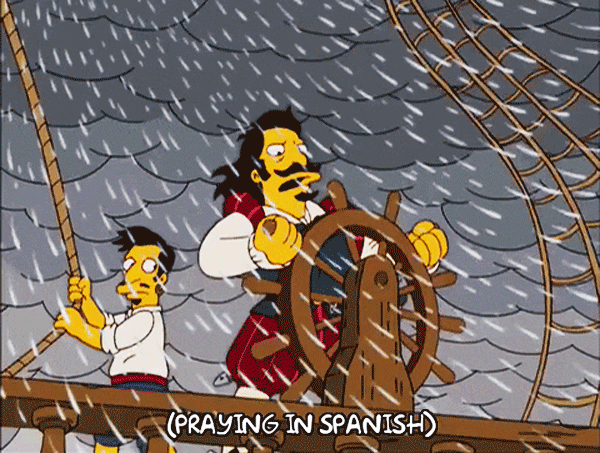
“Any port in a storm:”
Meaning: The proverb “Any port in a storm” suggests that, when in difficulty you need not to seek the perfect solution; any solution will suffice.
History: The first known use of this proverb is in the English author John Cleland's bawdy novel Memoirs of a Woman of Pleasure, 1749:
Pooh!", says he "my dear, any port in a storm.
Cleland's book is better known as Fanny Hill. The content of the book is, in the words of Mary Whitehouse, the founding president of the UK National Viewers' and Listeners' Association and campaigner against the permissive society, “utter filth”.
Cleland goes to elaborate lengths to describe the events in the story, which are by any standards exceedingly lewd, in euphemistic language. That is the case in the extract where 'any port in a storm' is found. What the heroine was doing with her gentleman companion uttered the line above I'll leave you to look for for yourself.
Whether Cleland coined the term 'any port in a storm' isn't clear. He made no attempt to define it so it may be that he knew that his audience would have been familiar with it. It might also be that he made the line up and didn't feel the need to explain it further. Either way, no example of the line, which has now become a well-known proverb, has been found earlier than 1749.
Phrases.org.uk

Science & Technology

FEATURED: The earliest atmosphere on Mercury
• Space telescope launched on daring quest to behold 1st stars
Earth and Mars were formed from inner solar system material
• The mystery of the small dimensionless number with a big effect
• Earth's first-known giant was as big as a sperm whale
Research team creates the world's lightest isotope of magnesium to date
• Researchers use electron microscope to turn nanotube into tiny transistor
• Blueprint reveals how plants build a sugar transport lane
Using game theory to thwart multistage privacy intrusions when sharing data
• Researchers identify how red meat increases cardiovascular disease risk
• 'Pop-up' electronic sensors could detect when individual heart cells misbehave
Phys.org / MedicalXpress / TechXplore

FEATURED: NASA's Webb telescope takes flight - a Christmas gift to astronomers everywhere
• Early and fast rise of Mesozoic ocean giants
Gene pinpointed that helps put human hearts in the right place
• More than a virus: Science’s areas to watch in 2022
Arduous trip through Amazon brings COVID-19 vaccines to vulnerable groups
• U.S. allows Merck's COVID-19 pill amid safety, variant concerns
Cropland has gobbled up over 1 million square kilometers of Earth’s surface
• Experimental quantum teleportation of propagating microwaves
Science AAAS

Bizarre News (we couldn’t make up stuff this good - real news story)
Swarms of mutant bacteria look just like Van Gogh's “Starry Night”

A group of swarming bacteria just created strikingly artistic (and swirly) “paintings” that are reminiscent of the masterpieces by iconic Dutch painter Vincent van Gogh.
Microbiologists noticed the similarities while studying the social cooperation of predatory bacteria called Myxococcus xanthus.
Individuals in this species are known to form cooperative swarms, in which they share resources to help overwhelm their prey.
The researchers were specifically studying a pair of proteins, TraA and TraB, that allow these microbes to recognize and bond with each other.
To do this, the team created mutated strains of M. xanthus that overexpressed the genes behind these proteins, to see how they would change, the scientists reported in a study published December 7 in the journal mSystems.
Once the color was added, the team realized the striking resemblance between the bacteria-made art and Van Gogh's, especially with the blue-and-yellow image that has a striking resemblance to “The Starry Night”, one of the most famous pieces by the 19th-century painter.

The discovery highlights how studying social bacteria may reveal “behaviors that also exhibit artistic beauty”, study co-author Daniel Wall, a molecular biologist at the University of Wyoming, said in a statement.
M. xanthus individuals form cooperative swarms by pooling their enzymes (proteins) and metabolites (chemicals), which help turn food into energy by speeding up metabolic reactions. This enables the bacteria to overwhelm their prey, which are typically other microbes. (They sometimes also gobble up other, unrelated strains of M. xanthus.)
Normally, these swarms are head-to-tail chains of individual cells in a long line like a “commuter train”, study co-author Oleg Igoshin, a computational biologist at Rice University in Texas, said in the statement. However, the mutations introduced in the lab caused the usual head-to-tail swarms to turn into rotating swirls of cells, each swirl as large as a millimeter (0.04 inch) or more.
“The cells are in dense groups and are in contact with others all the time”, much more than in their usual swarms, Igoshin said in the statement.

The overexpression of TraA and TraB also created stronger bonds that meant the bacteria swarms stuck together longer and seemed to be unable to revert to individual cells.
In mutated strains,
“Your neighbor will remain your neighbor for longer”, Igoshin said in the statement.
Related: FIVE times science inspired art
ELEVEN hidden secrets in famous works of art
NINE famous art forgers
FIVE ways gut bacteria affect your health
Live Science (12/17/2021) 


SONG FACTS
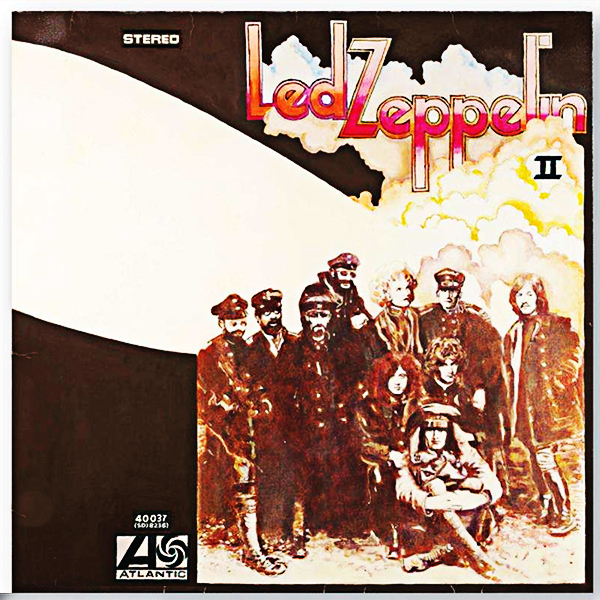
“Whole Lotta Love”  - Led Zeppelin
- Led Zeppelin
Album: Led Zeppelin II
Released 1969 
“Whole Lotta Love”  is a blistering track from Led Zeppelin's second album contains some of Robert Plant's most lascivious lyrics, culled from the blues.
It's not poetry, but he gets his point across quite effectively, letting the girl know that he's yearning, and ready to give her all of his love - every inch.
is a blistering track from Led Zeppelin's second album contains some of Robert Plant's most lascivious lyrics, culled from the blues.
It's not poetry, but he gets his point across quite effectively, letting the girl know that he's yearning, and ready to give her all of his love - every inch.
Plant's lyrics are based on a 1962 Muddy Waters song written by Willie Dixon called
“You Need Love”  , where Waters sings:
, where Waters sings:
I ain't foolin', you need schoolin'
Baby, you know you need coolin'
Woman, way down inside
The band reached an agreement with Dixon, who used the settlement money to set up a program providing instruments for schools.
The 1966 Small Faces song
“You Need Loving”  also coped from Dixon's song, and those lyrics are more similar to what Plant used. In that one, Steve Marriott sings:
also coped from Dixon's song, and those lyrics are more similar to what Plant used. In that one, Steve Marriott sings:
I ain't foolin', woman you need coolin'
I'm gonna send you, right back to schoolin'
Way down inside your heart, woman
You need lovin'
The massive drum sound was the foundation of this track, so Jimmy Page recorded it in the big room at Olympic Studios in London, which had 28-foot ceilings. One of the engineers, George Chkiantz, got the sound by putting the drums on a platform and setting up microphones in unusual places: a stereo boom eight feet above the kit, two distant side microphones, and a AKG D30 placed two feet from the bass drum.
“For the song to work as this panoramic audio experience, I needed Bonzo to really stand out, so that every stick stroke sounded clear and you could really feel them”, Page said in the Wall Street Journal. “If the drums were recorded just right, we could lay in everything else.”
The massive drum sound was the foundation of this track, so Jimmy Page recorded it in the big room at Olympic Studios in London, which had 28-foot ceilings. One of the engineers, George Chkiantz, got the sound by putting the drums on a platform and setting up microphones in unusual places: a stereo boom eight feet above the kit, two distant side microphones, and a AKG D30 placed two feet from the bass drum. “For the song to work as this panoramic audio experience, I needed Bonzo to really stand out, so that every stick stroke sounded clear and you could really feel them”, Page said in the Wall Street Journal. “If the drums were recorded just right, we could lay in everything else.”
Jimmy Page served as Led Zeppelin's producer, and on this song, he let loose in the studio, using all kinds of innovative techniques, particularly in the freeform section about 1:20 in, which was the result of him and engineer Eddie Kramer “twiddling every knob known to man.” This part is often referred to as “the freakout.”
One of the more intriguing sections of this song comes at the 4-minute mark, where the distant voice of Robert Plant sings each line (“Way down inside... woman... you need... love”) before his full-throated vocal comes in.
This is known as “backward echo”, and one of the first uses of the technique, but it happened by accident: A different take of Plant's vocal bled over to his master vocal track, so when Page and engineer Eddie Kramer mixed the song, they couldn't get rid of it. They did what most creative professionals do with a mistake: they accentuated it to make it sound intentional, adding reverb to it so Plant sounded like he was foreshadowing his lines from afar.
Led Zeppelin didn't release singles in the UK, where it was considered gauche, and in America, they didn't issue any from their first album.
“Whole Lotta Love”  was the first song they allowed as a U.S. single, and it became their biggest hit, going to #4 (their only Top 10 entry) despite a 5:33 running time. Many of Zeppelin's most popular songs, including
“Stairway To Heaven”
was the first song they allowed as a U.S. single, and it became their biggest hit, going to #4 (their only Top 10 entry) despite a 5:33 running time. Many of Zeppelin's most popular songs, including
“Stairway To Heaven”  , were not released as singles.
, were not released as singles.
Led Zeppelin used this as the basis for a medley they performed in their later shows. They had lots of songs by then, so they used the medley to play snippets of their popular songs they did not want to play all the way through. They incorporated various blues songs in these medleys as well, notably
“Boogie Chillen”  by John Lee Hooker, which was often followed by what they called
“Boogie Woogie”
by John Lee Hooker, which was often followed by what they called
“Boogie Woogie”  , by Unknown, and
“Let's Have A Party”
, by Unknown, and
“Let's Have A Party”  by Wanda Jackson. They would put this in when Robert Plant would yell, “Way Down INSIDE”.
by Wanda Jackson. They would put this in when Robert Plant would yell, “Way Down INSIDE”.
When this song became a hit in America, the UK division of the band's label, Atlantic Records, pressed copies of a shortened version of the song to release there, but Jimmy Page quashed that idea when he heard the 3:12 truncated edit
(“I played it once, hated it and never listened to the short version again”, he told the Wall Street Journal). The band issued a press release stating:
“Led Zeppelin have no intention of issuing 'Whole Lotta Love' as a single as they feel it was written as part of their concept of the album.” The American single is the same version as found on the album.
This was recorded on an 8-track tape machine at Olympic Studios, London in April 1968, but Jimmy Page waited to mix it until the band came to New York on tour in August because he wanted Eddie Kramer, who had relocated there, to work on it. To the delight of deconstructionists, Page later released the eight split tracks of
“Whole Lotta Love”  , along with the mixdowns, on the Studio Magik - Sessions 1968-1980 CD compilation. These stems reveal an entire middle vocal section that's totally different and the “da da” vocal about two beats behind what was released. In the drum tracks, during the rolls, you can hear John Bonham groaning.
, along with the mixdowns, on the Studio Magik - Sessions 1968-1980 CD compilation. These stems reveal an entire middle vocal section that's totally different and the “da da” vocal about two beats behind what was released. In the drum tracks, during the rolls, you can hear John Bonham groaning.
The line, “Shake for me girl, I wanna be your back door man” is a reference to the “back door man” of blues cliché (popularized in a Willie Dixon song).
This guy enters and leaves through the back door to avoid detection, as the lady is using him to cheat on her boyfriend or husband. This adds an illicit edge to the storyline.
In the freakout section of this song, Jimmy Page played a theremin, a bizarre electronic instrument he liked to experiment with consisting of a black box and antennae, famously heard on the 1966 Beach Boys song
“Good Vibration”  . The sound is altered by moving one's hand closer to or farther from the antennae and was used to create the fuzz that alternates back and forth through the speakers. It can be heard to great effect on their Royal Albert Hall footage. Page decided to try theremin after hearing the group Spirit use one.
. The sound is altered by moving one's hand closer to or farther from the antennae and was used to create the fuzz that alternates back and forth through the speakers. It can be heard to great effect on their Royal Albert Hall footage. Page decided to try theremin after hearing the group Spirit use one.
After Page started fooling around with the theremin in the studio, it was open season for experimentation on the track; he started messing around with his guitar by detuning it and pulling on the strings, and Plant did his part by going to the extreme high of his vocal range.
Page, Plant, and John Paul Jones played this at the Atlantic Records 40th anniversary concert in 1988 with Jason Bonham sitting in on drums for his late father. Jason joined the band again in 2007 at a benefit concert for the Ahmet Ertegun education fund, where they played this as the first encore.
In 1997, this became the only single Led Zeppelin released in the UK when a 4:50 edit was issued to celebrate the band's 30th anniversary. The singles chart was dominated by acts like the Spice Girls and Puff Daddy, and this release got little attention, reaching just #21.
Guitar World noted Page's use of the wah-wah pedal during his famous solo, securing its place at #17 on the magazine's 2015 list of greatest wah solos of all time. Jack White has cited it as the greatest guitar solo ever recorded.
Jimmy Page played the loose blues riff for the intro on a Sunburst 1958 Les Paul Standard through a 100W Marshall “Plexi” head amp with distortion from the EL34 output valves.
Alexis Korner hit #13 UK and #58 U.S. with his mostly instrumental cover of this song in 1970 with his studio group CCS. King Curtis also did an instrumental version that went to #64 U.S. that year. A vocal cover by The Wonder Band reached #87 U.S. in 1987. Tina Turner recorded it for her 1975 album Acid Queen, and the London Symphony Orchestra also covered it.
The remaining members of Led Zeppelin played this at their Live Aid reunion in 1985. Along with Tony Thompson, Phil Collins sat in on drums. Collins was the biggest presence at Live Aid. He played a set in London, flew to Philadelphia, played another set, then stayed on when Zeppelin took the stage. Jimmy Page was not happy - he thought Collins butchered it.
This song was performed by Leona Lewis and Jimmy Page at the closing ceremony of the 2008 Beijing Olympics during the hand over to the host of the 2012 games, London. Prior to the performance there was some concern about the track's somewhat family unfriendly lyrical content, but Lewis tactfully changed the words from “every inch of my love” to “every bit of my love”.
They appeared alongside English soccer star David Beckham as symbols of British entertainment, both old and new. The performance took place in a magnificent, elaborate setting: Beijing's “Bird's Nest” Olympic Stadium. Lewis and Page appeared out of what had been a London double-decker bus, later transformed into a garden of green hedges.
John Paul Jones told Uncut magazine January 2009 that Page began to come into his own as a producer around the time of this song. Said Jones:
“The backwards echo stuff. A lot of the microphone techniques were just inspired. Using distance-miking… and small amplifiers. Everybody thinks we go in the studio with huge walls of amplifiers, but he doesn't. He uses a really small amplifier and he just mikes it up really well, so that it fits into a sonic picture.”
Continued ...
MORE SONGS
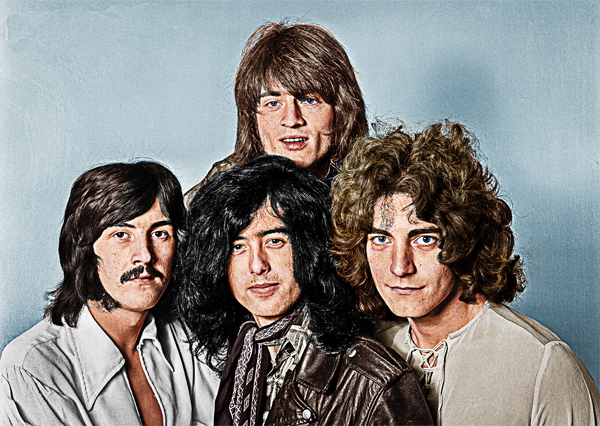
1969
“Whole Lotta Love”  Music Video
Music Video 
“Ramble On”  Live
Live 
“Good Times Bad Times”  Live
Live 
“Communication Breakdown”  Live
Live 
“Dazed and Confused”  Live
Live 
“What Is and What Should Never Be”  Live
Live 
“Babe I'm Gonna Leave You”  Live
Live 
“Thank You”  Live
Live 
“Moby Dick”  Live
Live 
“Living Loving Maid (She's Just a Woman)” 
“Travelling Riverside Blues”  Music Video
Music Video 
“Whole Lotta Love” - Led Zeppelin 1969
List of Led Zeppelin Songs Written or Inspired by Others
Led Zeppelin official site (Led Zeppelin Discography) / Rock & Roll Hall of Fame / Billboard / All Music / Song Facts /
Ultimate Classic Rock / Led Zeppelin
Image: “Led Zeppelin II (album)” by Led Zeppelin
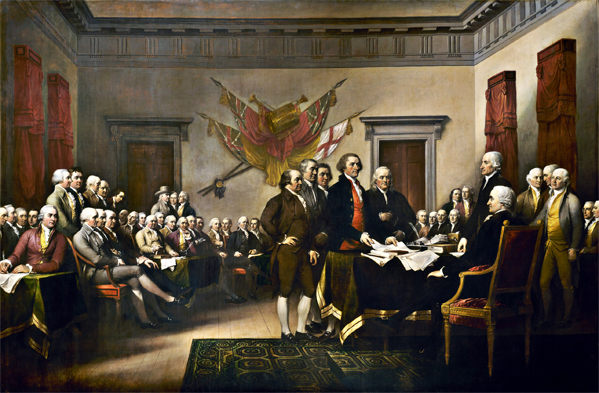
Trivia
● In what city did the First and Second Continental Congresses meet?
Answer to Trivia
READ MORE: History.com
● Who is often regarded as the designer of the Volkswagen (VW) Beetle?
Answer to Trivia
READ MORE: History.com
● Prior to the Capitol Building in Washington D.C., where were presidential inaugurations held?
Answer to Trivia
READ MORE: Bicycle Cards
● Avarua, the capital of the Cook Islands, is located on which South Pacific atoll?
Answer to Trivia
READ MORE: Wikipedia
● What are the four “C” used to evaluate the value and quality of a diamond?
Answer to Trivia
READ MORE: Gemological Institute Of America GIA.edu

A Test for People Who Know Everything
From the Jeopardy Archives Category - “CONSTELLATIONS” ($200)
“The Whirlpool Galaxy is in Canes Venatici, “the hunting’ these.”
Answer to Jeopardy READ MORE: Constellation Guide
From the Jeopardy Archives Category - “CONSTELLATIONS” ($400)
“In the 18th century a big constellation named for this ship in which Jason & his ‘nauts’ sailed was broken up into smaller ones.”
Answer to Jeopardy READ MORE: University Libraries
From the Jeopardy Archives Category - “CONSTELLATIONS” ($600)
“The star Arcturus is in Boötes, but its name is Greek for ‘bear guard’; it's right on the tail of this other constellation.”
Answer to Jeopardy READ MORE: Constellation Guide
From the Jeopardy Archives Category - “CONSTELLATIONS” ($800)
“Lepus, ‘the hare’, is the quarry of this nearby constellation.”
Answer to Jeopardy READ MORE: Constellation Guide
From the Jeopardy Archives Category - “CONSTELLATIONS” ($1,000)
“Appearing overhead in northern summer months, the Summer Triangle is formed by the brightest stars of Aquila the eagle, Lyra the harp and this swan-shaped constellation.”
Answer to Jeopardy READ MORE: Constellation Guide

Joke of the Day
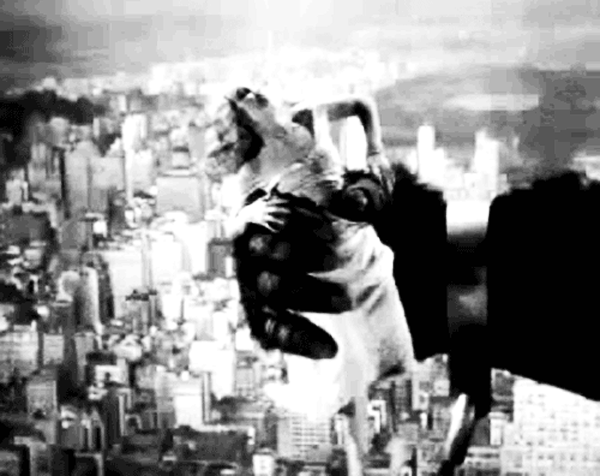
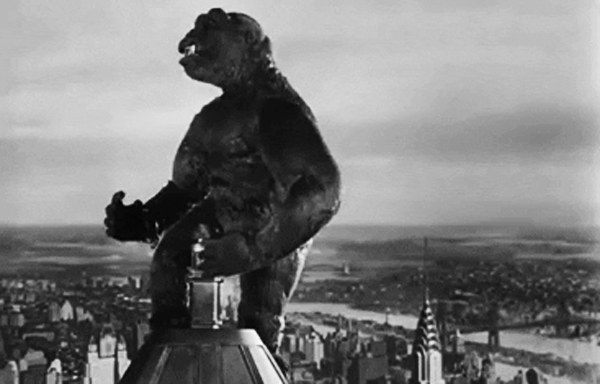
A Lawyer and a Blond On A Plane
A lawyer and a blonde are sitting next to each other on a long flight from Los Angeles to New York.
The lawyer leans over to her and asks if she would like to play a fun game.
The blonde just wants to take a nap, so she politely declines and rolls over to the window to catch a few winks.
The lawyer persists and explains that the game is really easy and a lot of fun. He explains “I ask you a question, and if you don't know the answer, you pay me $5, and vice-versa.”
Again, she politely declines and tries to get some sleep.
The lawyer, now somewhat agitated, says, “Okay, if you don't know the answer you pay me $5, and if I don't know the answer that you'll ask me, I will pay you $500!.”
Figuring that since she is a blonde that he will easily win the match.
This catches the blonde's attention and, figuring that there will be no end to this torment unless she plays, agrees to the game.
The lawyer asks the first question. “What's the distance from the earth to the moon?”
The blonde doesn't say a word, reaches in to her purse, pulls out a five dollar bill and hands it to the lawyer.
Now, it's the blonde's turn.
The blonde asks the lawyer: “What goes up a hill with three legs, and comes down with four?”
The lawyer looks at her with a puzzled look. He takes out his laptop computer and searches all his references.
He taps into the Airphone with his modem and searches the Net and the Library of Congress.
Frustrated, he sends E-mails to all his coworkers and friends he knows.
All to no avail.
After over an hour, he wakes the blonde and hands her $500.
The blonde politely takes the $500 and turns away to get back to sleep.
The lawyer, who is more than a little miffed, wakes the blonde and asks, “Well, so what IS the answer!?”
Without a word, the blonde reaches into her purse, hands the lawyer $5, and goes back to sleep.




































